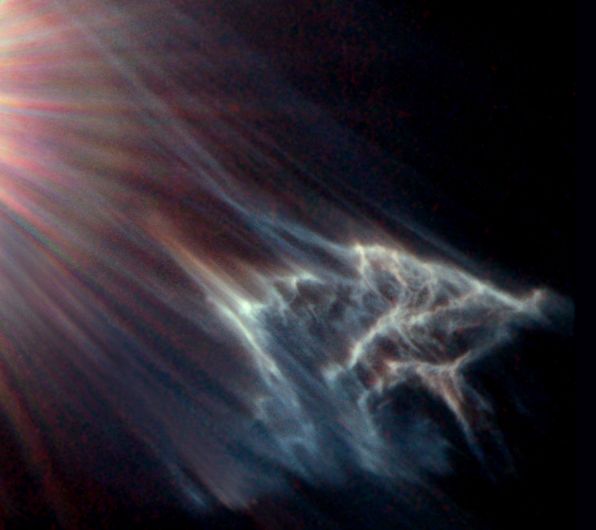
|
Explanation: (xxxedit and linkxxx) In the well known Pleiades star cluster, starlight is slowly destroying this wandering cloud of gas and dust. The star Merope lies just off the upper left edge of this picture from the Hubble Space Telescope. In the past 100,000 years, part of the cloud has by chance moved so close to this star - only 3,500 times the Earth-Sun distance - that the starlight itself is having a very dramatic effect. Pressure of the star's light significantly repels the dust in the reflection nebula, and smaller dust particles are repelled more strongly. As a result, parts of the dust cloud have become stratified, pointing toward Merope. The closest particles are the most massive and the least affected by the radiation pressure. A longer-term result will be the general destruction of the dust by the energetic starlight.
|
January February March April May June July August September October November December |
| |||||||||||||||||||||||||||||||||||||||||||||||||||||||
NASA Web Site Statements, Warnings, and Disclaimers
NASA Official: Jay Norris. Specific rights apply.
A service of: LHEA at NASA / GSFC
& Michigan Tech. U.
Based on Astronomy Picture
Of the Day
Publications with keywords: pleiades - reflection nebula - Merope
Publications with words: pleiades - reflection nebula - Merope
See also:
- APOD: 2025 September 19 B The NGC 6914 Complex
- APOD: 2025 August 25 B The Meteor and the Star Cluster
- APOD: 2025 July 8 B The Pleiades in Red and Blue
- APOD: 2025 April 8 B Moon Visits Sister Stars
- APOD: 2025 March 5 B Seven Sisters versus California
- Reflections on VdB 31
- The Variable Nebula NGC 2261
